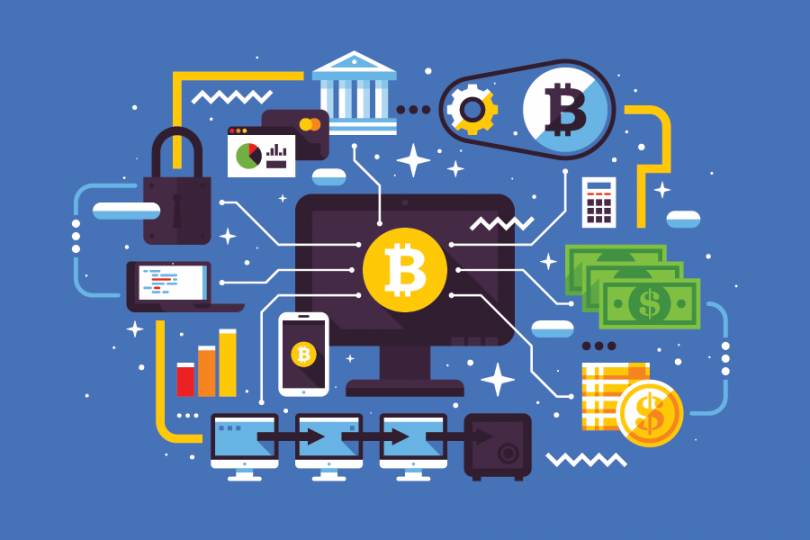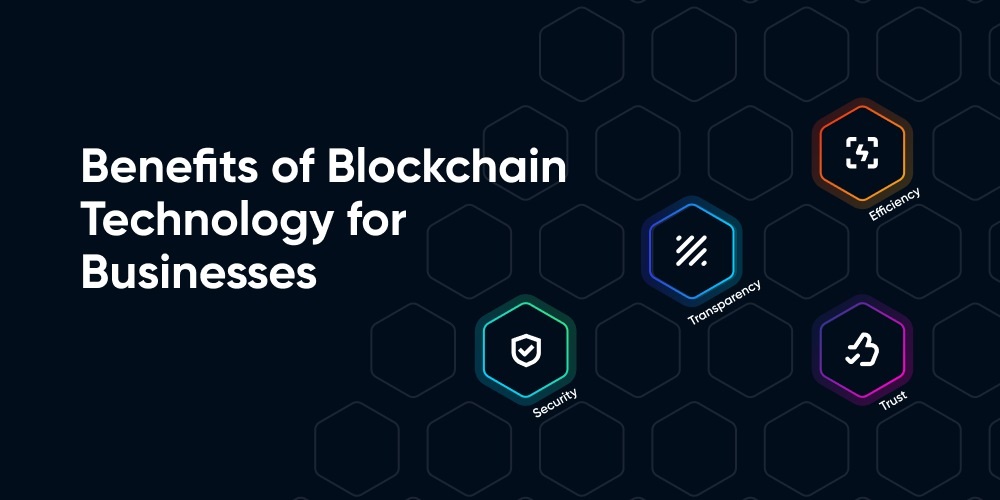Blockchain Efficiency Unlocked: Cutting Costs Seamlessly with Tech
They say time is money, but in tech, efficiency is the real goldmine. Picture this: an innovation so sharp it slices through fees like a hot knife through butter. That’s what we’re talking about with How does blockchain reduce costs? The answer isn’t just ‘less spending’; it’s about reshaping the expense landscape. Forget traditional drags on your budget—step into a world where transactions are slick and operations are lean. I dive deep into the gears of cost efficiency in blockchain. From how smart contracts revive your supply chain to nixing the middlemen—that’s right, say goodbye to those pesky extra costs. And don’t worry, I break it down barney-style, so you walk away knowing exactly how to play the blockchain game to favor your piggy bank. Let’s unlock the potential together, dollar by dollar.
Understanding Cost Efficiency in Blockchain Technology
The Mechanics of Transaction Cost Reduction
Blockchain cuts costs in many key areas. First off, it makes for cheaper, faster transactions. A normal bank transfer could take days and cost a fair bit, especially if it’s going across borders. But the same thing on a blockchain? It’s done in a snap, for a lot less. This is because the blockchain doesn’t need a middleman – like a bank – to check everything. All users on a blockchain check the transactions. This is called ‘consensus’. It’s a bit like everyone in town checking if the money is real, not just the bank teller.
The use of smart contracts also helps bring the bill down. Imagine them as self-executing deals. When certain conditions are met, they just go ahead and do what needs doing. This cuts out having to pay lawyers or middlemen. It runs 24/7 too, so no need to wait.
Smart contracts can also speed things up, like getting paid right away when a job’s done. No delay waiting for a cheque to clear. The system does the checking and paying, all on its own, no pause or holiday.
Analyzing Blockchain Operational Costs
Now, what about the costs of running a blockchain? They vary. There’s the initial setup, which can be a bit costly. You’d need tech and people who know their way around a blockchain. But once you’re up and running, the savings kick in.
The main savings are from less admin work, fewer errors, and tight security, so fraud drops. You know how you feel safe when your money’s in a strong safe? It’s like that. Your stuff is secure on a blockchain.
Also, managing data costs less. Traditional systems can be messy and costly, with data all over. It’s different on a blockchain. Everything is in one place and easy to check. So you save time and money. And for businesses, time is money.
Now, let’s talk energy. Yes, some blockchains can chew through power because all those computers need energy to run the show. But not all blockchains are the same. Many work on making sure they sip energy, not gulp it. They find ways to reach ‘consensus’ without needing loads of power.
And as for smart contracts, they make things tick without extra effort or cost. Once a contract is live, it does its thing without needing more from you. It’s set and forget and saves you money.
In closing, not every blockchain is cheap to run. It’s like cars – some drink gas while others run on fumes. Either way, over time, the dollars you save with blockchain can really add up. It’s your job to choose the smart, thrifty blockchain that suits your needs. It’s all about making sure the ledger is tight, the consensus is energy-wise, and the contracts do their bit to chop costs.
Now you know how blockchain can be your secret weapon to saving and making things run smooth. It’s not just tech talk. It’s real savings for you and me.
Smart Contracts and Automation: Game Changers in Cost Savings
Revolutionizing the Supply Chain with Blockchain
Let’s dive into how blockchain is changing the game for businesses today. Imagine a giant puzzle. Each piece is a step in making and moving products. It’s huge, right? Blockchain makes this puzzle simpler. It’s like having a guide, making sure each piece fits perfectly, fast and right. This guide is called a supply chain.
Supply chains can be slow and cost a lot. With blockchain, they get a huge boost. Imagine all the steps talk to each other without waiting. They just know what to do next. The products move smoother, quicker, and don’t get lost. This means we save cash on mistakes and time.
Now, how does blockchain do this? It shares info better. Everyone involved sees the same thing. No mix-ups or delays. It’s like a group text where everyone knows the plans, no whispers or secrets. This makes moving goods like a race car, not a wagon. You get things done without wasting time or money. That’s the blockchain supply chain magic!
How Automation via Smart Contracts Cuts Costs
Have you heard of smart contracts? They’re like robot helpers in the money world. You say, “Do this when that happens,” and they just do it. No need for a person to okay it. It’s all automatic. Smart, right?
Let’s paint a picture. You buy a toy online. With a smart contract, paying sends a signal. This tells the warehouse, “Hey, ship that toy!” It’s a done deal. Quick and without mistakes. Goodbye, extra steps and hello, saving cash!
But wait, there’s more! Smart contracts don’t just ship toys. They can do big stuff. Like, if you’re a company getting a huge delivery. The smart contract checks everything. If it’s all good, money goes to the seller. No waiting for a person to check.
This cuts costs in a big way. No paying for folks to do these things. There’s less room for mistakes, too. Mistakes can be pricey. Say no to oops moments, and yes to smart contracts. They help keep your coins in your pocket.
In all, blockchain and smart contracts help us work faster and smarter. They’re pals that help us cut costs and rock it in today’s fast world. They make sure businesses can focus on what’s key – growing and making customers happy. That’s the scoop on how tech is helping us keep more money in the bank!
Decentralization: Eliminating Middlemen and Enhancing Efficiency
The Role of Distributed Ledger Technology in Reducing Ledger Maintenance Costs
With blockchain, we wave goodbye to hefty ledger costs. Distributed Ledger Technology (DLT) makes this happen. DLT means many computers work together to keep a shared, secure record of data. It’s like a group project where everyone has a copy of the work. No single person can mess it up. This cuts down the costs of keeping ledgers safe and up to date.
Now, why’s it cheaper, you ask? Simple – there’s no need for a central hub to manage it all. Without a middleman, you’re not paying someone else to keep tabs on your data. Imagine not needing a referee in a game because each player knows the rules. This is what DLT does for businesses. They save dough because everyone shares the ledger job.
Let’s dig deeper. Every time someone adds to the ledger, everyone’s copy updates. No mistakes. No cheats. This means businesses save on security. They also don’t need to double-check the work, slashing audit costs. It’s a two-for-one deal: safety and savings, hand in hand.
Peer-to-Peer Networks: Advantages in Speed and Cost-Effectiveness
Peer-to-peer, or P2P networks, speed things up and slim down costs. This network links users directly to each other. No more waiting for a middleman to pass the ball. It’s like playing catch without someone in the middle. You throw, they catch – easy as pie.
Faster trades aren’t just quicker; they’re cheaper too. In old systems, the “middle guy” took a slice of your cash for their trouble. Say bye to those fees with P2P. Lower fees mean more money in your pocket or for growing your business.
Here’s the kicker: for folks sending money abroad, P2P is a game-changer. It drops the cost of cross-border payments. That’s more love for less money!
And there’s more! Smart contracts on blockchain make sure deals are done right, minus extra costs. They’re like robot helpers that work for free. These helpers run on rules set in digital stone. Once conditions are met, they take action. No need to check if the job’s done. No room for errors. So, more pennies saved.
In short, a world with blockchain works smoother and costs less. From safer ledgers to kicking out costly middlemen, it’s all about efficiency. Like finding a faster route that also saves gas, blockchain gets the job done better.
Here, we see technology making real change. It shapes how we do business by making it leaner and meaner. It’s not just a buzzword; it’s a mighty tool that’s reshaping our financial landscape. With blockchain, we’re not just cutting costs; we’re reinventing the whole cost-cutting machine.
Strategic Implementation and Long-Term Financial Impact
Conducting a Thorough Blockchain Cost Analysis
To see if blockchain fits your needs, let’s talk about costs. You need to look at everything you spend money on and see how blockchain might change that. Think of what you pay for keeping track of data and deals. Blockchain could make this cheaper by taking out steps that cost you money.
For instance, using smart contracts can cut down on costs. These are like self-going deals that follow rules you set. So, when conditions are met, the contract does its thing. You don’t need someone to check on it. It’s trusty and fast. And yes, it saves you money, since you need fewer people to look over these contracts.
Blockchain can also help your supply chain be better and cost less. By tracking items from start to finish on the blockchain, you can see where they are and how they’re doing. This cuts down on lost items and makes sure they get where they’re going on time. Fewer mistakes means less wasted money.
Now, about those big scary words: blockchain operational costs. This means what you’ll spend to run a blockchain system. Sure, there’s some money to put down at the start. But here’s the secret – over time, it often saves you more than it costs. That’s because it’s so good at cutting out waste and extra steps.
Balancing Initial Investment Against Long-Term Savings with Blockchain Technology
You have to spend money to make money, right? With blockchain, you may need to spend some at the start. But think of it like planting a seed for a tree that will grow money leaves if you give it time. You put in cash at the start, get the tech you need, and train folks to use it. We call this the cost of blockchain implementation.
As the tree grows, it covers you in shade. In business talk, this means the blockchain starts saving you money. It makes transactions fast, so you get your money or stuff quicker. Peer-to-peer means you’re dealing direct, no middle people to pay. You can send cash across the world without big fees. The ledger tech is top-notch too, so you can trust it to keep your deals safe.
And finally, that tree grows fruits – those are the long-term savings. With everything running smooth, you don’t spend bucks on fixing issues. Clear and safe records mean audits are a breeze. Over time, blockchain might even lead to less fraud in your business, which is like making sure no one picks your money leaves.
By now, you see how smart contracts, a better supply chain, and skipping the extra fees can make your wallet happy. So, doing this blockchain cost analysis is like having a map that shows you where the treasure is. It’s a mix of teaming up with the right tech and waiting for the savings to roll in. Just make sure to check how it fits with what you do every day, and soon, you could be cutting costs like a pro!
In this post, we dived into how blockchain can make costs lower. We saw how transactions get cheaper thanks to blockchain’s smart tech. We uncovered the actual expenses of running blockchain systems.
Smart contracts and automation came up as big wins, too. They shake up the supply chain, making things more smooth and less pricey. Smart contracts alone sharpen the cutting of costs in many ways.
Decentralization is one more piece of the puzzle. Cutting out the middle guys saves us money and speeds things up using shared ledger tech and direct trades.
Lastly, we chewed over how to weigh the costs of starting with blockchain against the money it can save over time.
This stuff matters. If done right, blockchain’s cost-saving power can change how we do business, making it smarter and fairer for everyone. It takes some work to get it going, but once it’s up, the savings can be huge. Let’s keep pushing for smart, cost-effective tech solutions like blockchain. They’re the future, and they make sense for our wallets!
Q&A :
How does blockchain technology lead to cost savings in business operations?
Blockchain technology can lead to significant cost savings in various business operations by streamlining processes, reducing the need for intermediaries, and enhancing transaction efficiencies. By using a decentralized ledger, companies can lower transaction costs, reduce delays associated with traditional banking, minimize fraud and errors, and enhance auditing trails. The transparency and immutability of blockchain transactions mean that data is more trustworthy, leading to decreased administrative burden and ultimately lowering operational costs.
In what ways does blockchain cut costs in supply chain management?
Blockchain’s ability to provide real-time tracking and immutable record-keeping substantially reduces costs associated with supply chain management. By implementing blockchain, businesses can reduce paperwork, prevent counterfeit goods, eliminate duplicate tasks, and minimize the risk of compliance violations. Smart contracts can automate payments and other transactional processes, further cutting down on manual intervention and associated expenses. The increase in transparency helps identify inefficiencies, which can then be rectified to optimize the supply chain and reduce costs.
Can blockchain reduce costs in banking and financial services?
Yes, blockchain can notably reduce costs in banking and financial services. The technology underpins cryptocurrencies and enables peer-to-peer lending, cross-border payments, and real-time settlements without the need for intermediary banks. This cuts down on transaction fees, reduces processing times, and lowers the costs related to fraud prevention. Additionally, smart contracts can automate routine banking services, further diminishing operational expenses.
What impact does blockchain have on reducing auditing and compliance costs?
Blockchain has a profound impact on reducing auditing and compliance costs. Its immutable ledger allows for transparent transactions that can be verified by all parties involved, minimizing the resources needed for audits. This enhanced trustworthiness reduces the frequency and the scope of audits, leading to direct cost savings. Furthermore, blockchain’s smart contracts can enforce compliance automatically, trimming down the costs associated with regulatory adherence and reporting.
How does blockchain facilitate cost reduction in data storage and management?
Blockchain facilitates cost reduction in data storage and management by providing a decentralized storage solution that eliminates the need for costly data centers and redundant databases. Data is split into encrypted blocks and distributed across the network, reducing vulnerability to data breaches and therefore potentially lowering associated security costs. By enabling the creation of a single immutable version of data across the network, blockchain also decreases the costs arising from data reconciliation and management.





RELATED POSTS
Exploring the Use of blockchain technology in different sectors
The use of blockchain technology...
Unveiling the Blockchain Explorer: Your Ultimate Guide to Crypto Navigation
What is a Blockchain Explorer?...
Decentralized Learning Unveiled: Blockchain’s Trailblazing Educational Platforms
Blockchain-Powered Learning Platforms: Examining Decentralized...
How does DALLE work? A Comprehensive guide to AI Art generation
How does DALLE work? This...
Challenges of Blockchain in Healthcare: Revolution or Roadblock?
Navigating data security and patient...
What is Proof of Elapsed Time in Blockchain? Unveiling the Mystery Behind Efficient Consensus
What is Proof of Elapsed...
Mechanics Of Blockchain Technology: How It’s Transforming Tech
Learn the Mechanics of Blockchain...
Blockchain Unveiled: How Does Blockchain Technology Work
How does blockchain technology work?...
AI Agents: Automation solutions for Web3 platforms
Artificial intelligence is ushering in...
What are the benefits of blockchain: How It Transforms Business and Daily Life
Discover the benefits of blockchain...
Nick Neuman Crypto: A pioneer in Cryptocurrency security
Join me as we explore...
How to Choose a Crypto Wallet: Secure Your Digital Fortune
How to choose a crypto...
Disruptive potential of blockchain technology: Shaping Future
Unlocking the disruptive potential of...
BlackRock and Citadel New Stock Exchange – What Awaits in the Future?
The BlackRock and Citadel New...
Kroma Airdrop Season 2 – Opportunity to Earn KRO and Explore Web3
Kroma Airdrop Season 2 is...
WOO Network: A powerful DeFi financial platform
WOO Network (WOO) is a...